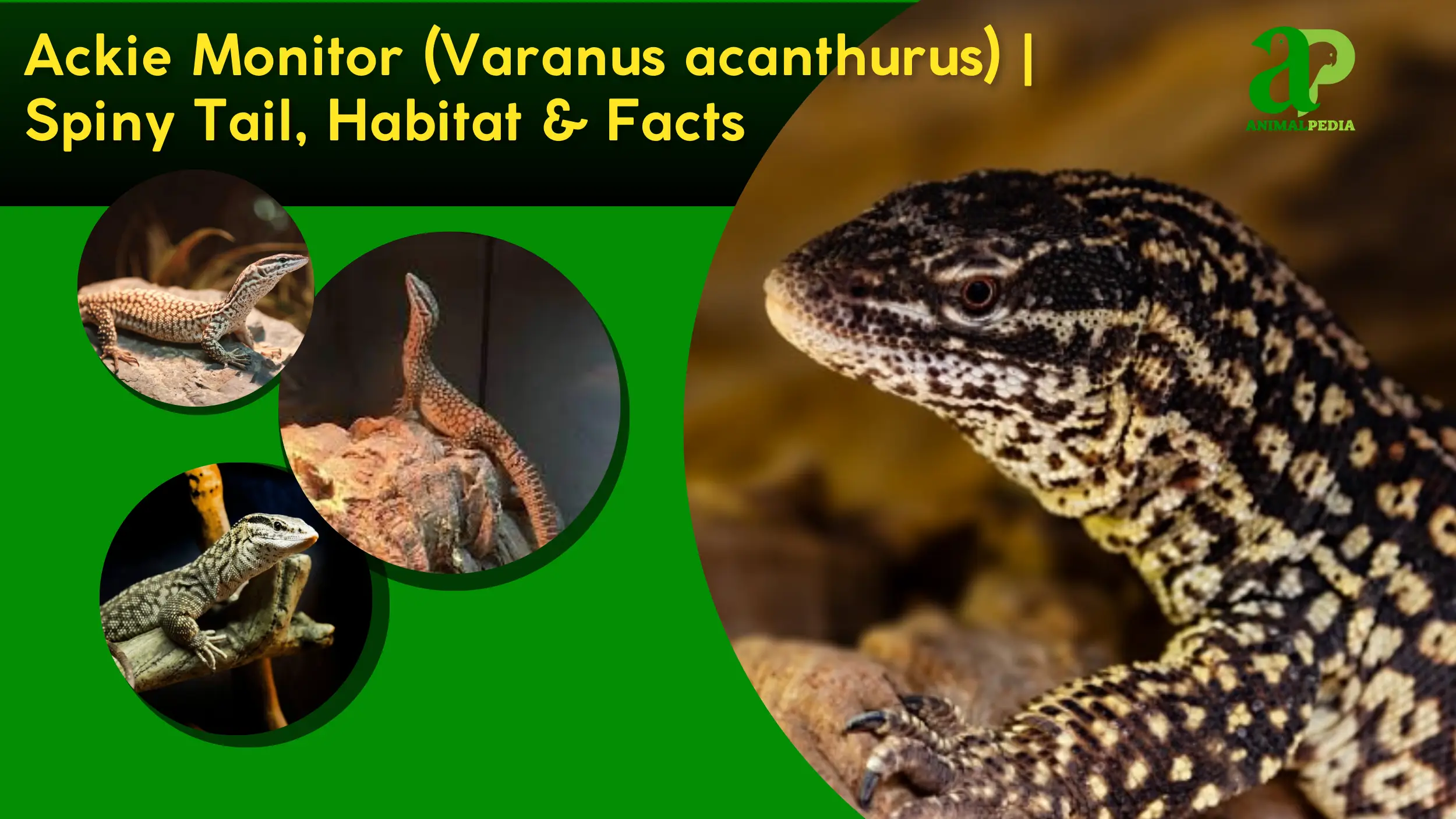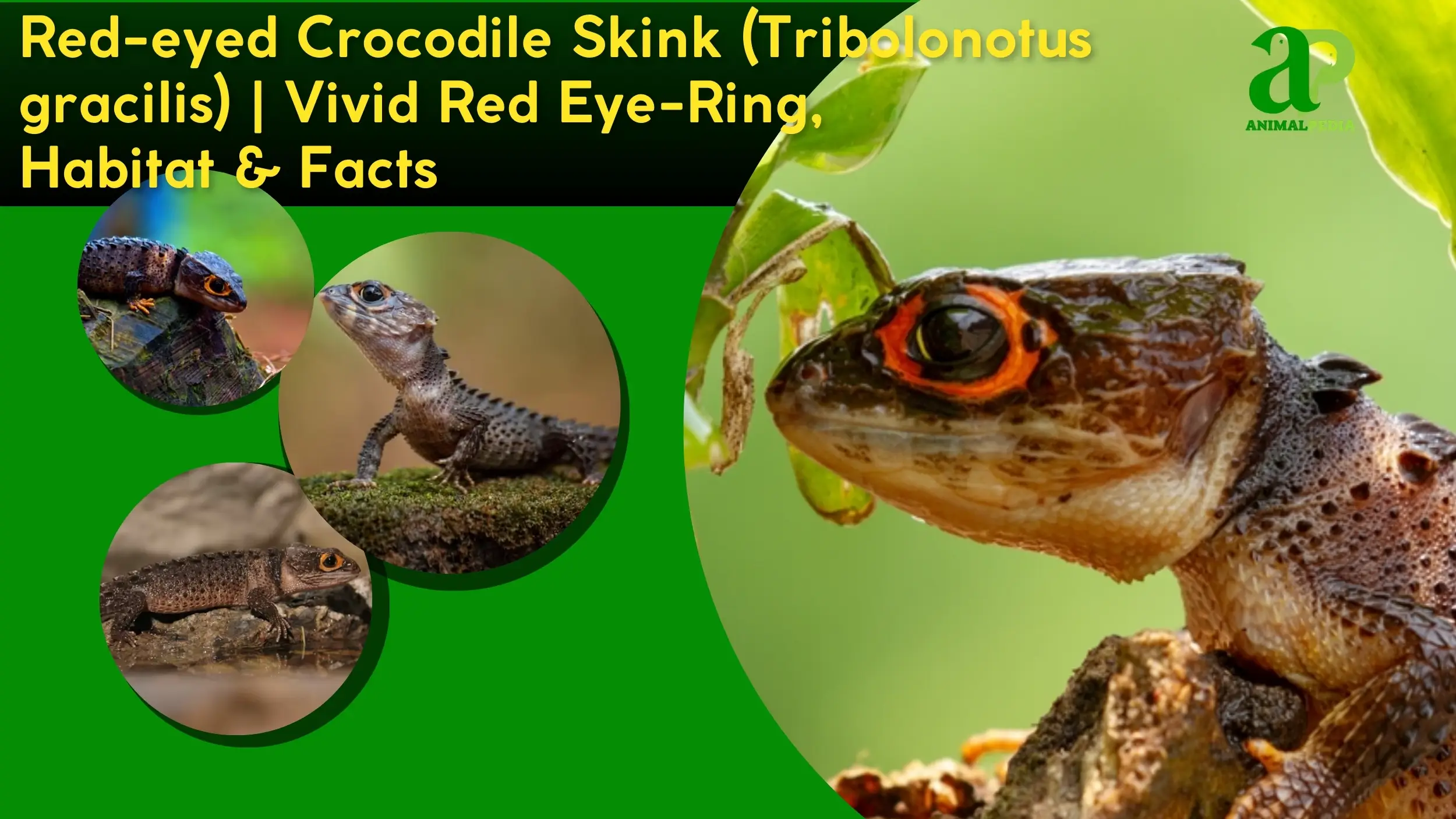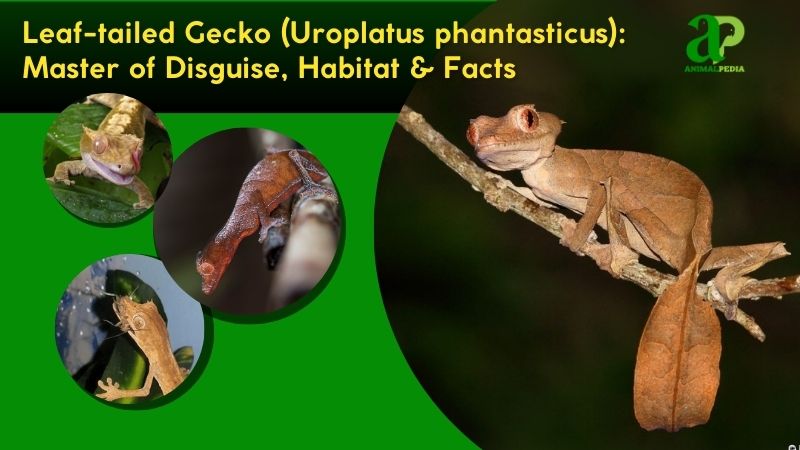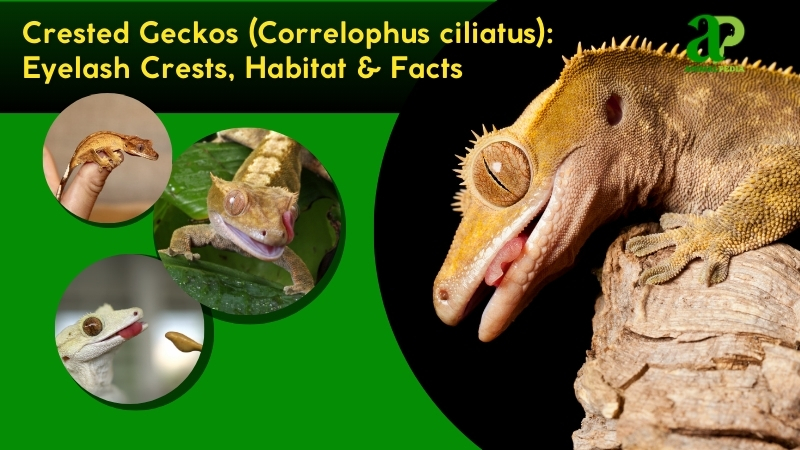Thorny devils (Moloch horridus) are unique Australian lizards known for their spiny bodies and adaptations to desert life. These reptiles belong to the Agamidae family within the Squamata order, class Reptilia, phylum Chordata, and kingdom Animalia.
Adults measure 6 to 8 inches in length and weigh 1 to 3 ounces, with females larger than males. They inhabit arid zones across Western Australia, Northern Territory, South Australia, and western Queensland. Their diet consists entirely of ants, consuming up to 3000 daily through sit-and-wait foraging.
Movement involves a slow, jerky gait at speeds of less than 1 mile per hour. They exhibit diurnal patterns, being active in the mornings and afternoons, with bimodal seasonal behavior to avoid extreme heat or cold. Conservation status remains the least concern according to the IUCN.
This comprehensive guide explores the thorny devil’s water-harvesting skin ability, natural habitat details, and key facts. Readers will discover physiological adaptations, behavioral traits, and ecological roles. What makes this species thrive in harsh environments? Dive into the details, starting with its distinctive physical features.
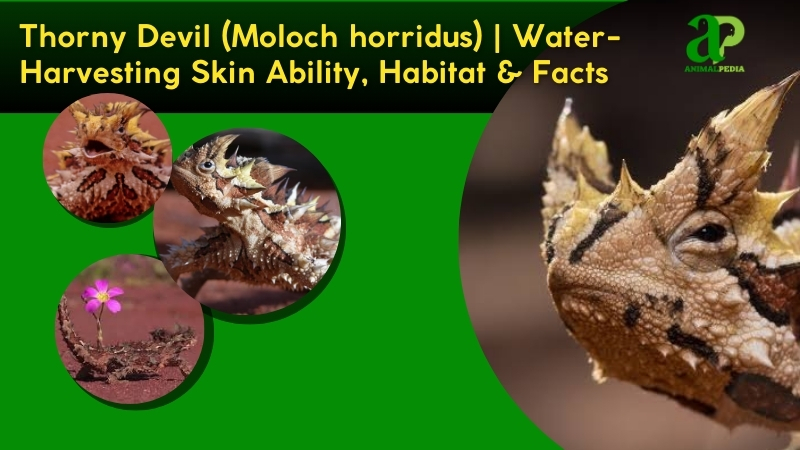
What Is A Thorny Devil?
A Thorny Devil (Moloch horridus) is a unique species of lizard indigenous to the sand plains and deserts of Australia, distinguished by its spiny skin and ability to collect water from its environment. Classified within the Agamidae family of dragon lizards and the order Squamata (lizards and snakes), this reptile is the sole member of its genus, Moloch (8). Common names for the species include Mountain Devil, Thorny Dragon, and Moloch (9).
While its distinctive physical traits often cause it to be mistaken for the North American horned lizard (Phrynosoma), these species are not closely related, a circumstance that showcases a phenomenon known as convergent evolution, where two different species evolve similar traits to adapt to similar conditions (4).
Research continues to examine the Thorny Devil’s water-harvesting methods, leading to different perspectives on how the animal acquires moisture. A 2017 scientific study found that the lizard’s skin channels effectively draw water from wet substrates, allowing it to drink through capillary transport (1).
By contrast, a 2016 study found that rain and damp sand are the primary sources of moisture, while dew was considered an insufficient source for water uptake (6). This divergence in scientific observation highlights the complexity of the Thorny Devil’s unique survival mechanisms. The thorny devil’s physical appearance is as fascinating as its survival strategies.
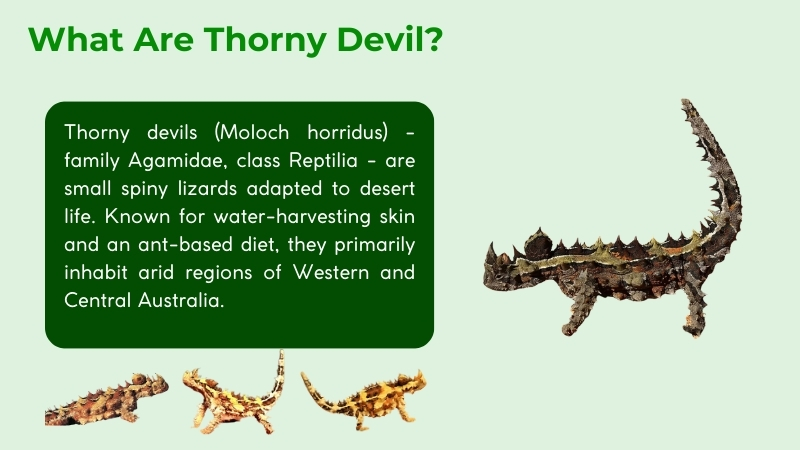
What Does The Thorny Devil Look Like?
The Thorny Devil has a squat, robust body, flattened to maintain a low profile in its desert habitat. Its skin is a mosaic of desert colors, including shades of brown, tan, olive, and yellow, which change with temperature to aid in thermoregulation and camouflage (8, 9).
This camouflaging pattern allows the lizard to blend seamlessly with sandy soils and acacia scrub. The animal’s entire upper body is covered with sharp, cone-shaped spines that deter predators from swallowing it (8, 9).
Five distinct features define the Thorny Devil’s appearance, each with a specific purpose. These features include a false head, parietal spines, specialized skin grooves, a spiky tail, and independently moving eyes.
- False Head: A soft knob on the back of the neck serves as a decoy, diverting a predator’s attack away from the lizard’s actual head. When threatened, the Thorny Devil often tucks its real head between its front legs, presenting this thorny knob to a predator, a defensive strategy that protects its vital organs (8, 9).
- Parietal Spines: The skull features sharp spines that contribute to its formidable, dragon-like appearance. These spines are not just for show; they make the lizard appear larger and more difficult for avian predators to swallow (8).
- Hydrophilic Skin Grooves: These microscopic channels across the skin facilitate capillary action, directing water from any part of the body to the corners of the mouth. This intricate network of grooves enables the lizard to absorb water from dew, mist, or even damp sand, a capability that is critical for survival in arid environments (1, 3).
- Beady Eyes: The Thorny Devil possesses small, dark, beady eyes that can move independently of each other. This trait allows the lizard to scan its surroundings for both tiny prey (ants) and potential predators simultaneously, without having to move its head, providing a wide and constant field of vision (8).
- Spiky Tail: The tail is also covered in spines, which, combined with its stiff posture, can be used to anchor itself in place or make it a more challenging meal for a predator (9).
Sexual dimorphism in the species is visible in size and coloration. Females grow larger and heavier than males. They also typically present a paler body color compared to the darker shades of the males (8). Now that we know what this unique lizard looks like, let’s explore its dimensions and size.
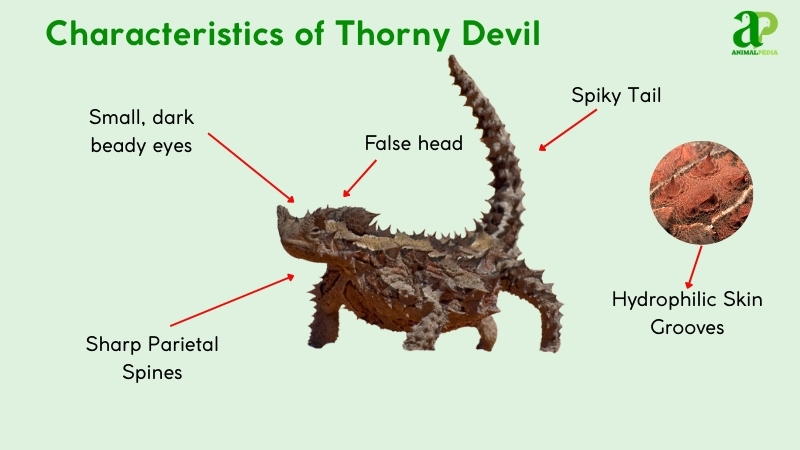
How Big Is The Thorny Devil?
The average adult Thorny Devil measures between 6 and 8.3 inches (15-21 cm) in total length, including the tail, and weighs from 1 to 3 ounces (30-90 g) (8, 9). To understand its size, consider that an adult is similar in length to a standard pencil.
The size difference between males and females is notable, with females being larger and heavier. This is an example of sexual dimorphism within the species (8).
| Male | Female | |
| Length (snout to vent) | up to 3.8 inches (9.6 cm) | up to 4.3 inches (11 cm) |
| Weight | up to 1.7 ounces (49 g) | up to 3.1 ounces (88.7 g) |
Hatchlings are small, measuring about 2.4-2.6 inches (6-6.5 cm) and weighing just 0.06 ounces (1.8 g). They grow steadily, reaching maturity around five years of age (8). To truly appreciate the thorny devil’s survival methods, it’s important to understand where it makes its home.
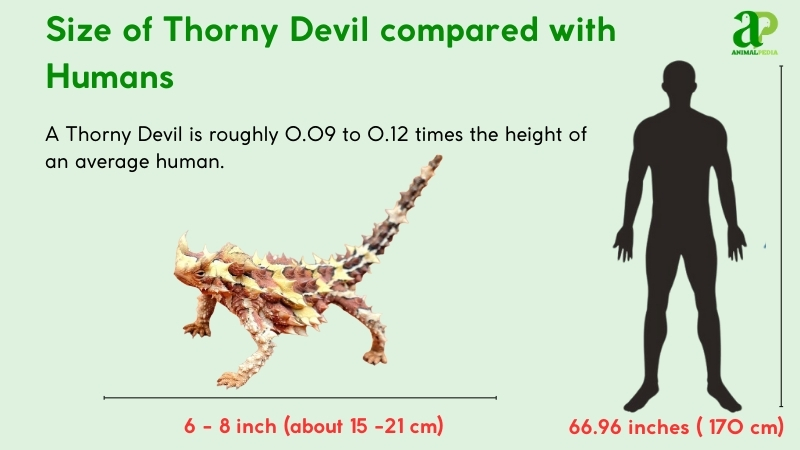
Where Does Thorny Devil Live?
The Thorny Devil is native to the arid and semi-arid regions of central and Western Australia. Its habitat is characterized by a dry climate with a sparse covering of vegetation. It is most commonly found in sandy deserts, sandplains, and sand-ridge deserts, where the loose soil provides a suitable medium for burrowing and camouflage.
This reptile’s geographic range is extensive, spanning across large portions of Western Australia, the Northern Territory, South Australia, and western Queensland (8, 9). The Thorny Devil thrives at elevations from near sea level to approximately 3,300 feet (1,000 meters) (8).
These animals are not territorial and are often found in the same areas, but they do not actively defend a specific plot of land from others of their species. Their survival depends on adapting to extreme temperatures, as they are not found in areas with prolonged cold weather or persistent frost. Its specialized habitat directly influences its unique daily and seasonal behaviors.
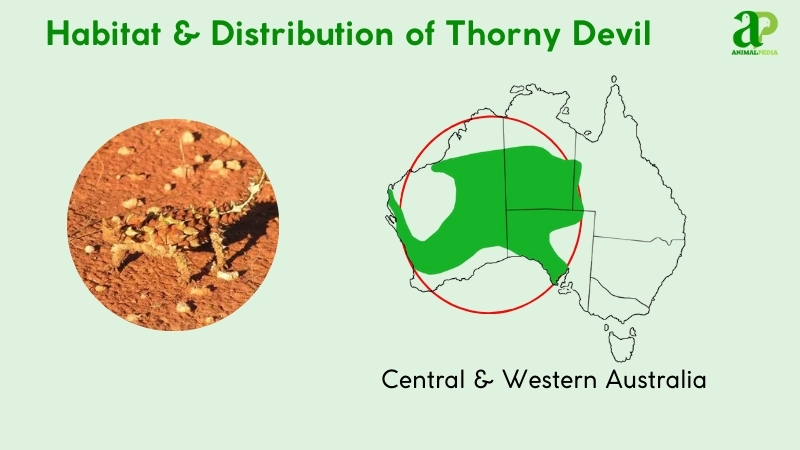
How Does Thorny Devil Behave?
The Thorny Devil exhibits a series of specialized behaviors centered on survival in its arid environment. Its movements are slow and deliberate, its feeding is highly specific, and its activity patterns are finely tuned to the climate.
- Diet and Feeding: This species is an exclusive ant-eater, consuming thousands of individual ants daily through a stationary foraging strategy.
- Movement and Abilities: The lizard moves with a slow, rocking gait and possesses specialized skin capable of absorbing and transporting water across its body.
- Daily/Seasonal Patterns: It is a diurnal animal that adjusts its activity periods seasonally to avoid the intense heat of summer and the cold of winter.
A closer look at these behaviors provides insight into the Thorny Devil’s adaptations.
Diet And Feeding
The Thorny Devil is a myrmecophagous species, meaning its diet consists exclusively of ants (7, 2). The lizard’s diet is highly specialized, relying solely on small, black ants from the Iridomyrmex genus (7, 2). This reptile can consume up to 3,000 ants in a single feeding session (7).
The Thorny Devil is a sit-and-wait predator, remaining motionless for extended periods on a well-used ant trail. When a sufficient number of ants have accumulated, the lizard will use its short, sticky tongue to capture them. This feeding strategy conserves the animal’s energy in a resource-scarce environment, and its specialized tongue allows it to consume a high volume of small prey quickly (7, 2).
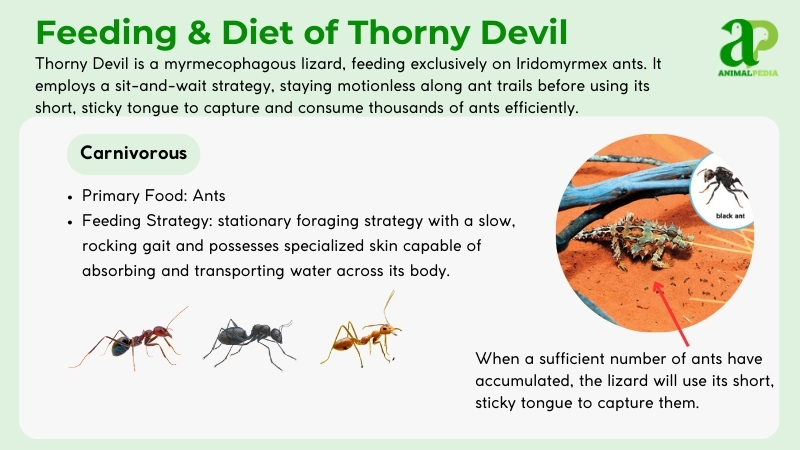
Movement And Abilities
The Thorny Devil moves with a slow, unique rocking gait, which serves as a form of locomotion and is used for hunting (5). This motion may also help the animal to dislodge ants from the ground as it walks (5). It is not known for its speed; a Thorny Devil can reach a maximum speed of 1 mile per hour (1.6 km/h) (8).
Its most prominent special ability is its hydrophilic skin, which can absorb and transport water through a network of microscopic grooves on its body (1, 3). The animal’s physical capabilities are optimized for a low-energy lifestyle, prioritizing camouflage and water harvesting over swift movement (8).
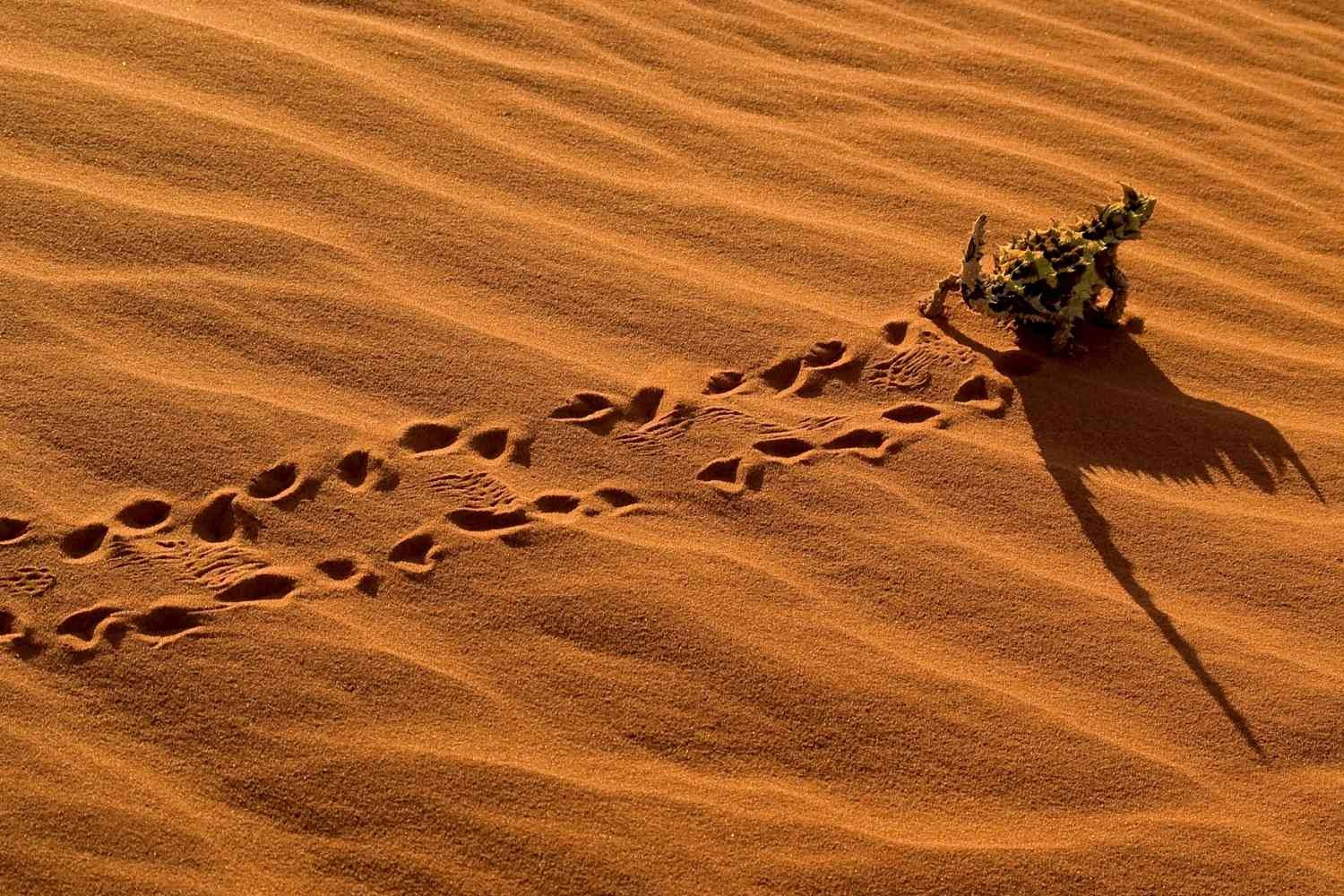
Daily/Seasonal Patterns
The Thorny Devil is a diurnal species, active primarily during the daytime (8, 9). Its daily activity is a simple timeline tailored to avoid the most extreme temperatures of the desert.
- Morning (7:00 AM – 10:00 AM): The lizard emerges from its burrow to bask in the sun, warming its body. This is also a primary hunting period.
- Midday (10:00 AM – 4:00 PM): As temperatures rise, the animal often seeks shelter in a burrow or under a bush to avoid overheating.
- Afternoon (4:00 PM – 7:00 PM): As temperatures begin to drop, the Thorny Devil may emerge for a second period of feeding before retreating into its burrow for the night.
The species exhibits bimodal seasonal activity, being most active during the spring and fall months when temperatures are moderate. During the hot summer, it becomes less active and may seek refuge underground.
In the colder winter months, it will enter a state of torpor (a form of hibernation) to conserve energy (8). These behaviors are all connected to a larger purpose: ensuring the survival and reproduction of the species.
How Does The Thorny Devil Reproduce?
The Thorny Devil is an oviparous species, meaning it reproduces by laying eggs (8, 9). The mating season generally occurs during the Australian spring and early summer. During courtship, male Thorny Devils display by nodding their heads and may engage in competitive displays with other males (9). The act of copulation is brief, lasting just a few minutes, after which the male will typically depart to seek other females (9).
Following copulation, the female will seek a suitable spot to dig a burrow for her eggs. A single clutch typically contains between 3 and 10 eggs (8). The female buries the eggs, which incubate for around 3 to 4 months before hatching (8). There is no subsequent parental care.
The hatchlings emerge fully independent and must immediately begin hunting for ants to survive. The ability to reproduce and survive for an extended period is a defining characteristic of this animal.
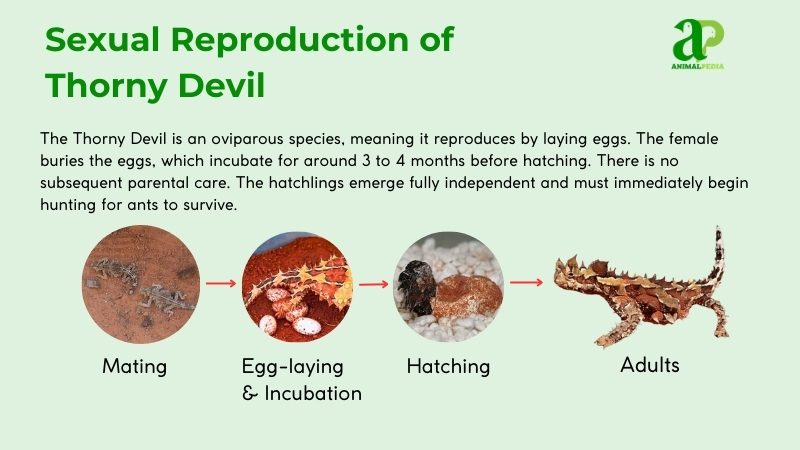
How Long Does The Thorny Devil Live?
The Thorny Devil lives for approximately 15 to 20 years on average in the wild (9). This lifespan can be influenced by various factors, including predation, disease, and the availability of food resources (9). While data on captive lifespans are limited, animals in managed care often live longer due to a consistent diet, protection from predators, and veterinary care (8).
This reptile reaches sexual maturity around five years of age (8). At this point, it is large enough to begin reproducing and becomes more resilient to threats. Longevity in the wild is tied to its ability to survive a difficult desert climate, find food, and avoid predators. Its spiky body offers a clear advantage against many animals that hunt lizards. The thorny devil’s longevity contributes to its role within the ecosystem and its overall benefit to humans and the environment.
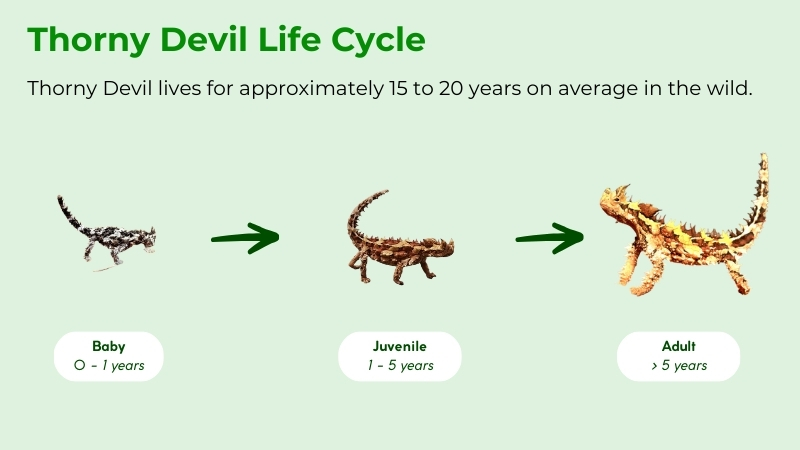
Is The Thorny Devil Beneficial To Humans?
The Thorny Devil is a beneficial species that poses no harm to humans. It is not venomous and does not bite or attack, instead relying on its spiky body for passive defense against predators (8, 9). Ecologically, the lizard is a highly specialized predator of ants, consuming thousands of ants each day (7). This activity helps to regulate insect populations within their native desert habitat, contributing to the overall ecological balance.
The Thorny Devil’s significance extends beyond its ecological role. For many Aboriginal Australian communities, the Thorny Devil holds cultural importance. It often appears in traditional art and folklore, symbolizing resilience and the wisdom of surviving in the harsh desert environment. Its role in the ecosystem is secure, as the species is not currently endangered.
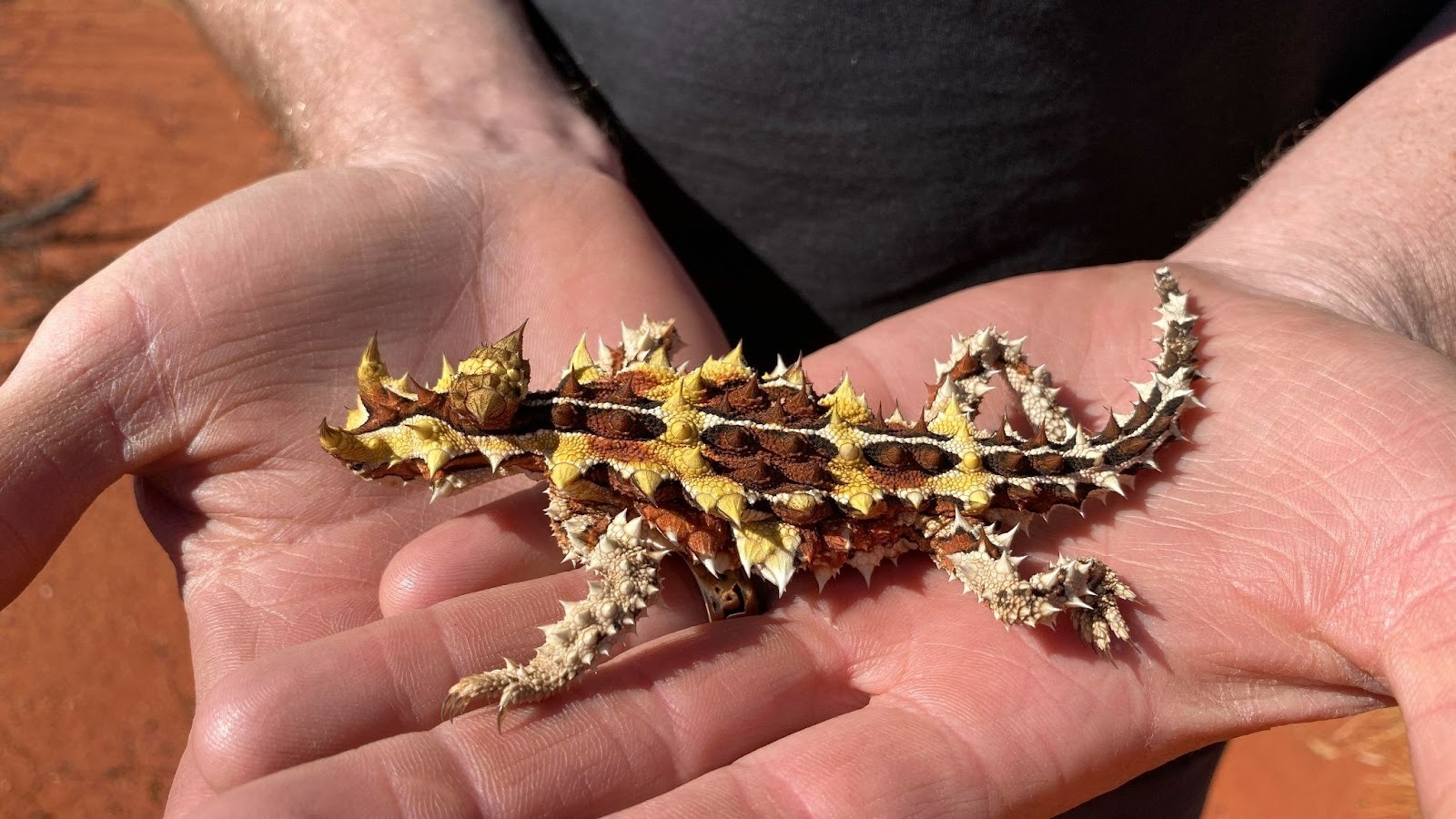
Is The Thorny Devil Endangered?
The Thorny Devil is not considered an endangered species (8). The International Union for Conservation of Nature (IUCN) has classified the species as Least Concern on its Red List (8). This status indicates that the global population is stable and the species is not at risk of extinction in the near future.
While the species is not currently threatened, it is important to understand its ecological value. The Thorny Devil helps regulate ant populations, contributing to the balance of the arid ecosystems it inhabits (7).
People can support the long-term survival of this and other species by not disturbing native wildlife and by supporting organizations that work to protect Australian desert habitats from the effects of climate change and habitat degradation. Now, let’s explore some amazing and little-known facts about this fascinating creature.
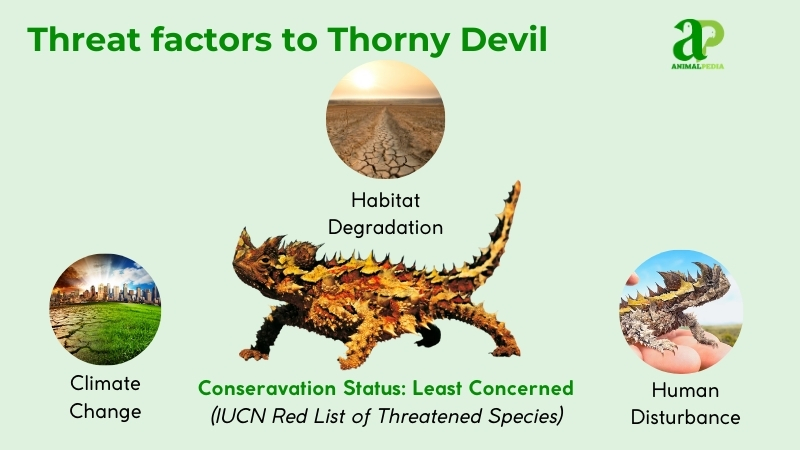
Fascinating Facts About Thorny Devil
The Thorny Devil’s survival depends on a variety of adaptations that go beyond its superficial appearance. These physiological and behavioral traits demonstrate how it has evolved to thrive in its extreme environment.
- Efficient Water Harvesting. A 2017 study revealed the microscopic channels on the thorny devil’s skin act as a self-sustaining capillary system (1). This allows the lizard to absorb water directly from wet sand or rain, directing it to its mouth without needing to move.
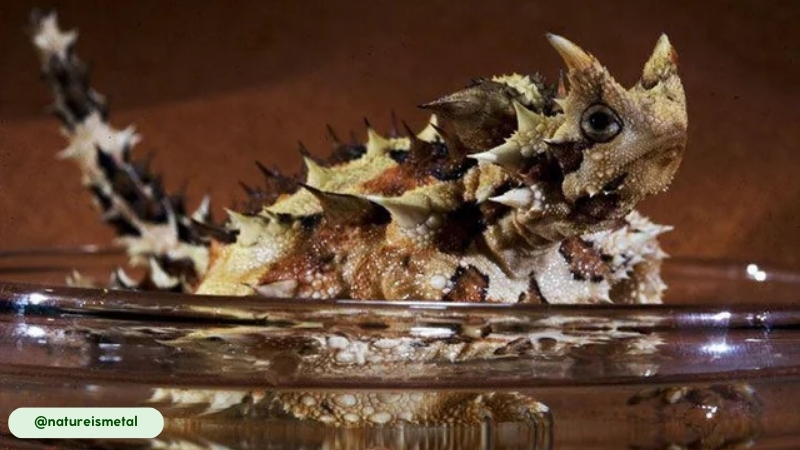
- Color-Changing Camouflage. The thorny devil’s skin has a unique ability to shift its color from pale yellow to deep reddish-brown (8, 9). This physiological change, a form of thermoregulation, allows it to absorb more solar energy in the morning and reflect it in the afternoon.
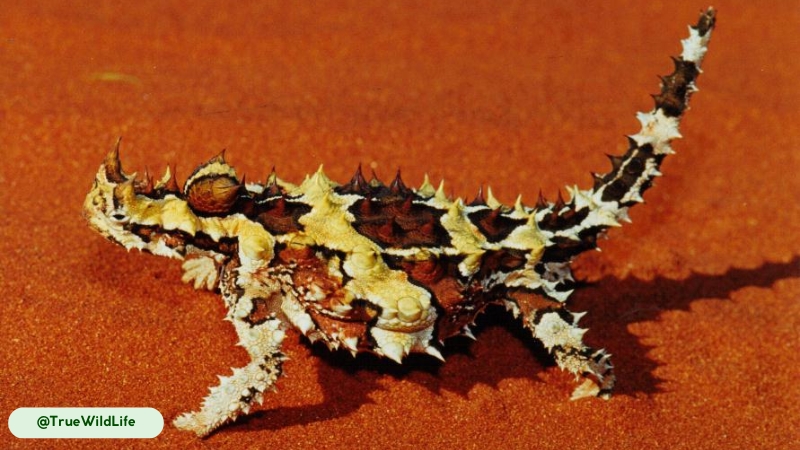
- A Diet of Thousands. A single thorny devil can consume an astonishing number of ants. These specialized hunters have a feeding rate that can reach up to 45 ants per minute, allowing them to ingest as many as 3,000 ants in a single feeding session (7).
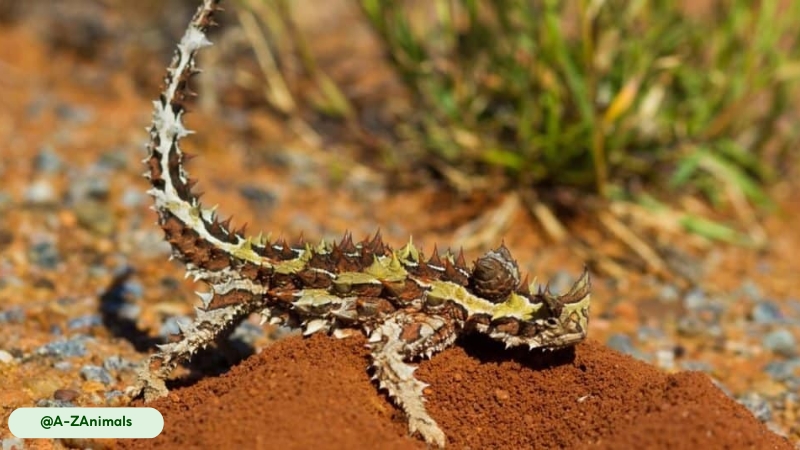
- A False Head Defense. The spiky knob located on the thorny devil’s neck is not a true head but a fleshy appendage used for deception. When faced with a threat, the lizard tucks its head down between its front legs, presenting this thorny knob to a predator.
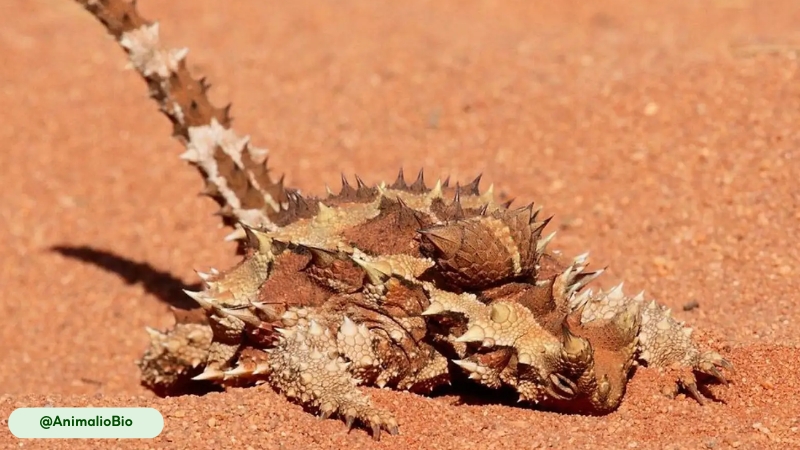
- An Unusually Long Lifespan. The thorny devil’s longevity is for a lizard of its size, with an average lifespan of 15 to 20 years in the wild (9). This long life is attributed to a slow metabolism and a low-energy lifestyle, which conserves resources.
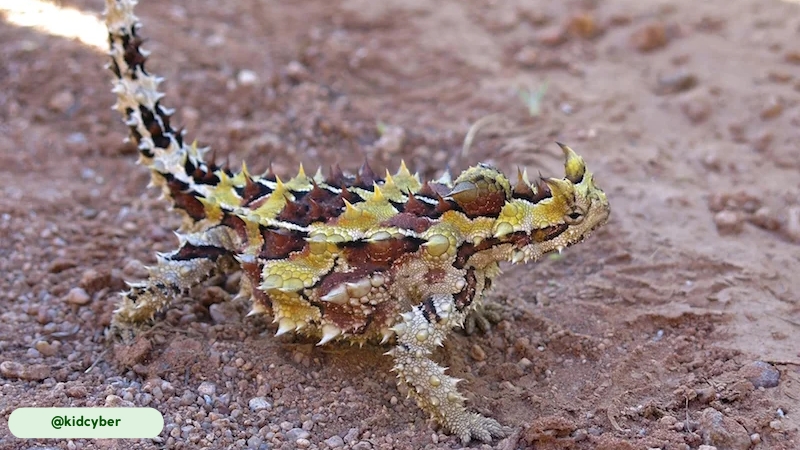
- Specialized Burrowing. To avoid extreme temperatures, the thorny devil digs a specific burrow with its back legs. It creates a small chamber where it can rest during the hottest part of the day, using its false head to block the entrance (9).
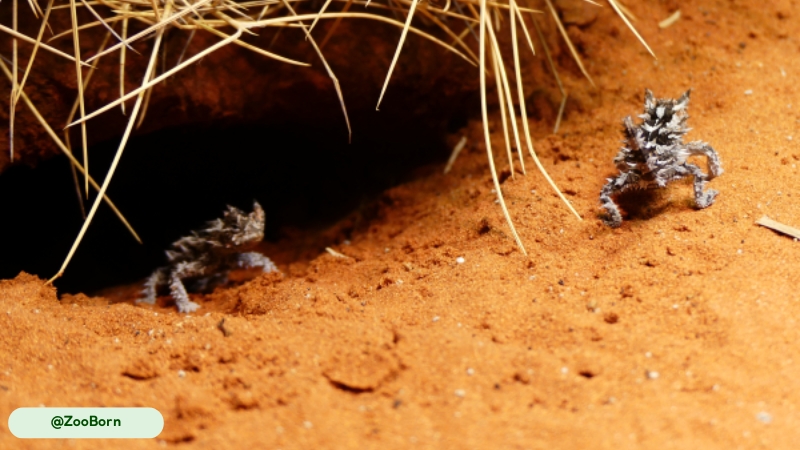
- A Unique Rocking Gait. The thorny devil moves with an unusual, rocking gait (5). While its movements are slow, the strange motion may help it to dislodge ants from the ground as it walks, making it easier to find prey.
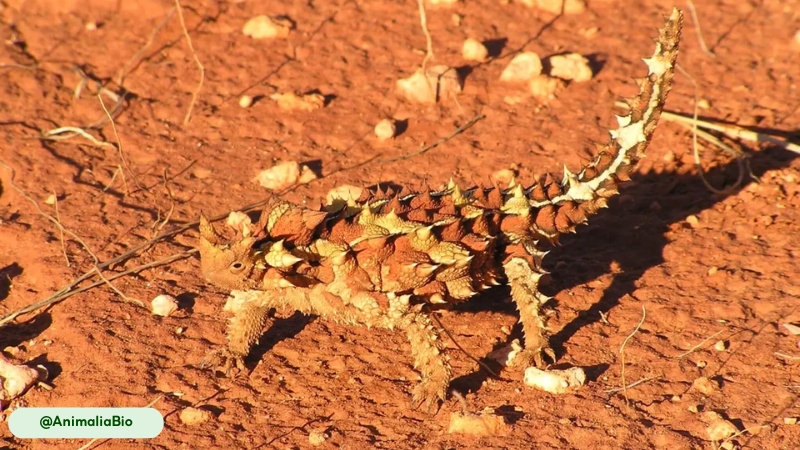
- Silent Hunters. Unlike some other reptile species, the thorny devil is not known to produce any vocalizations. It is a completely silent animal, relying on its stillness and camouflage to avoid detection.
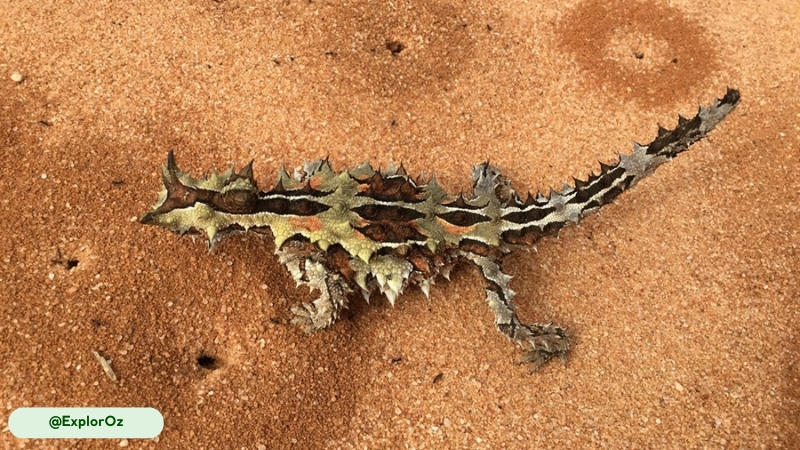
- Nocturnal Torpor. During the cold desert nights, thorny devils enter a state of torpor to conserve energy (8). This physiological slowdown reduces metabolic rate and allows the animal to survive without food until the morning sun provides enough warmth.
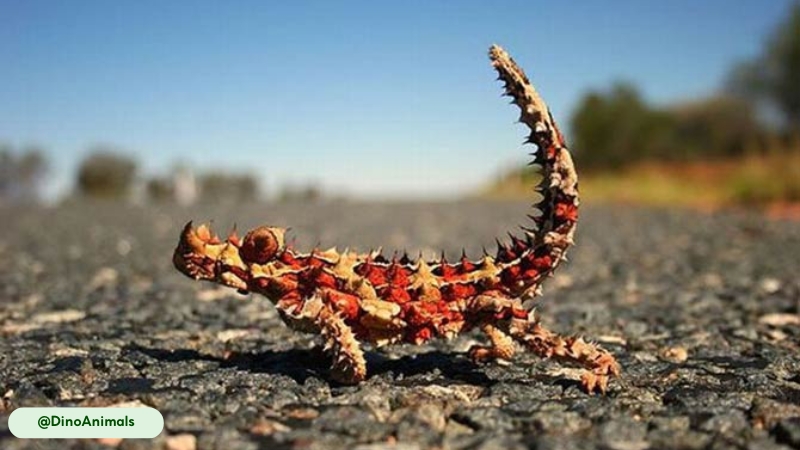
- Spines for Water. A 2023 study found that the microscopic structure of the spines is also integrated into its water-harvesting system (3). The grooves on the spines can also collect and transport water to the main channels of the body.
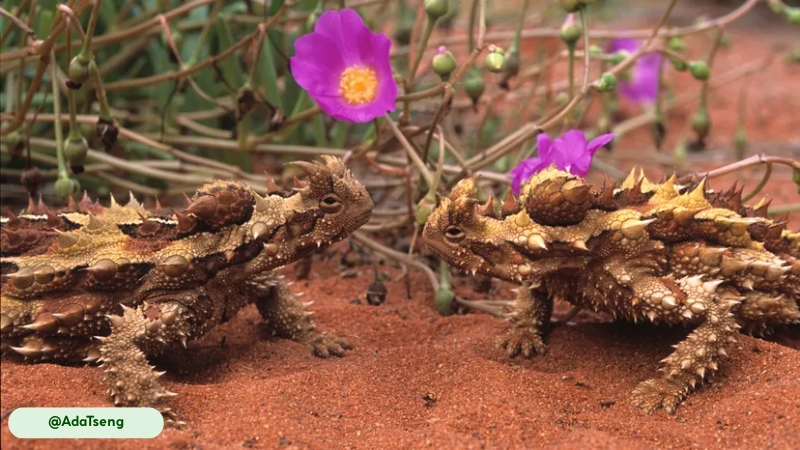
Frequently Asked Questions About Thorny Devil
Are Thorny Devils Dangerous?
No, thorny devils are not dangerous to humans. They are not venomous and do not bite or attack. Their defense relies on passive tactics, such as freezing and displaying their spiky body, which makes them difficult for predators to swallow.
Can You Have a Thorny Devil as a Pet?
No, it is not possible to keep a thorny devil as a pet. Their diet consists of a single ant species, making captive care nearly impossible, and laws prohibit their removal from native habitats.
How Does The Thorny Devil Survive In The Desert?
The thorny devil survives by utilizing specialized physiological and behavioral adaptations. Its unique skin collects water from moisture and rain, while its bimodal activity patterns and burrowing behavior allow it to avoid the desert’s extreme temperatures.
Do Females Thorny Devils Look After Babies?
Female thorny devils do not provide parental care. After laying a clutch of eggs in a burrow, they abandon the site. The hatchlings emerge fully independent and must immediately fend for themselves.
How Do Thorny Devils Protect Themselves?
Thorny devils protect themselves through passive defense mechanisms. Their body, covered in sharp, cone-shaped spines, makes them a difficult meal for predators. They also use a false head to divert attacks away from their true head.
Conclusion
The Thorny Devil is a true marvel of adaptation, a reptile uniquely suited to its demanding Australian desert habitat. Its ability to drink through its skin, change color, and survive on a specialized diet of ants showcases the incredible ways species evolve to thrive in harsh conditions. Its cultural significance and ecological role as an insect population regulator remind us of the deep connections between all living things.
At Animal Pedia, we are dedicated to providing scientifically accurate, visually engaging content that deepens your understanding of the world’s diverse fauna. We encourage you to continue exploring animal life by visiting our website. Explore more fascinating creatures, learn about their unique behaviors, and appreciate the intricate balance of Earth’s ecosystems.





